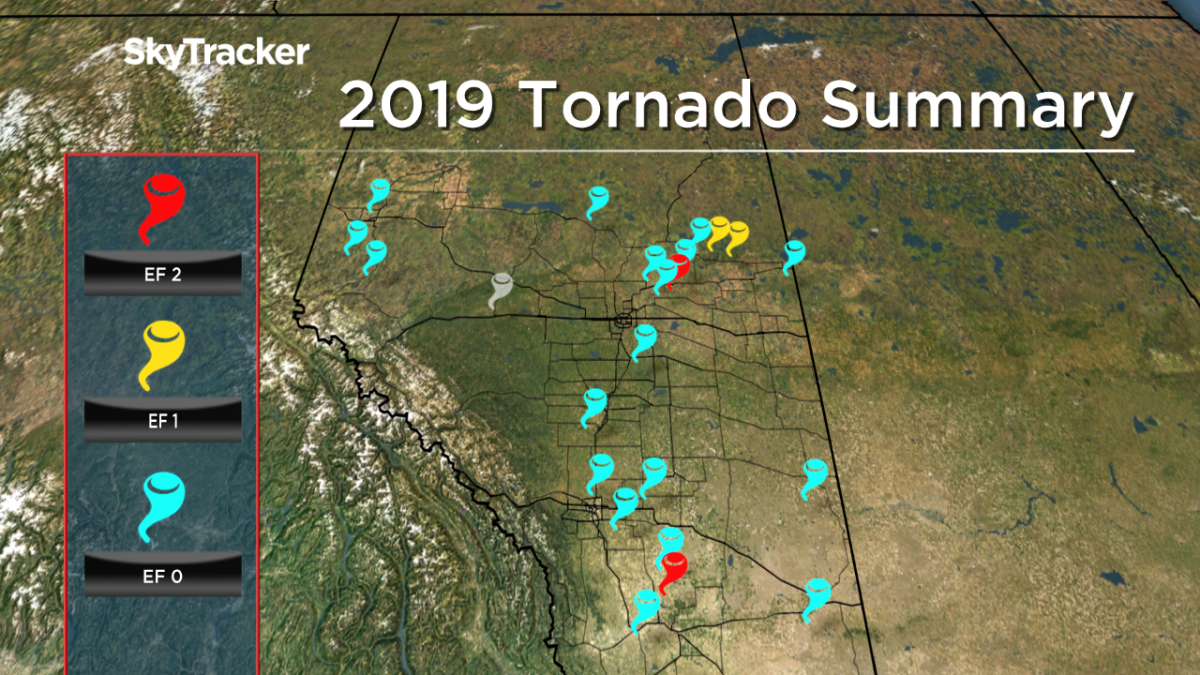Any time over the last three months in Alberta has shown that when it comes to “normal,” the term is best left to the washing machine dial, and not the weather.

Or is it?
“The average temperature for summer 2019 was 16 C,” Environment Canada meteorologist Sara Hoffman said.
“If you look at the total record for Edmonton — and that would be from 1982 to 2019 — that average temperature for summer is 16 C, so we were bang on.”
Yet the internet continues to roil over the wet that was, and rightly so.
Hoffman said that Edmonton sees, on average, 233 mm of rain from June to August. This year the city received a whopping 331 mm. That makes this the eight-wettest summer since the records began 138 years ago; the wettest since 1988 with 395 mm.
Watch below: Between June and August, there were 54 days with rain in Edmonton

Also of note, is that it was Fort McMurray’s third-wettest summer since records began 105 years ago.
While we did not break rainfall records, the wet is part of the reason why Alberta saw a high number of tornadoes this year.
“There will be more tornadoes because of the increase in moisture,” Hoffman said, adding more is putting it lightly. There have been 23 tornadoes in 2019 so far. Alberta averages 12-15 per year.
The most recent one was confirmed as an EF-0 just a couple of days ago, south of Carbon, Alta.
The severe weather, however, didn’t end with rain and tornadoes. When you add in hail and strong winds, the bottom line for many people paints a grim picture of damage this summer.
“The city of Edmonton had a $90-million in insured losses hail storm on Aug. 2,” Hoffman said, adding another storm on July 30 and 31 in central Alberta caused equal losses. There was also an $11-million storm on July 13.
Hoffman notes that those totals are only from claims, not including uninsured losses.
On a brighter and louder note, some records were set not just provincially but nationally with regards to lightning strikes.
Alberta set a record in July with 602,000 strikes. The average is 416,000 for the month.
Nationally, Canadians saw 2,182,000 strikes for the month of July, with the average being 1,756,000.
So what does that all mean for the coming fall season? Unfortunately, it is a tricky forecast to make given a lack of a well defined El Niño or La Niña.
However, with the current model runs and forecasts, Hoffman said warmer than normal temperatures are expected for this fall, as well as normal precipitation for most of the province except for the south where a little less precipitation than normal is expected.
Want your weather on the go? Download the Global News Skytracker weather app for iOS and Android.



Comments